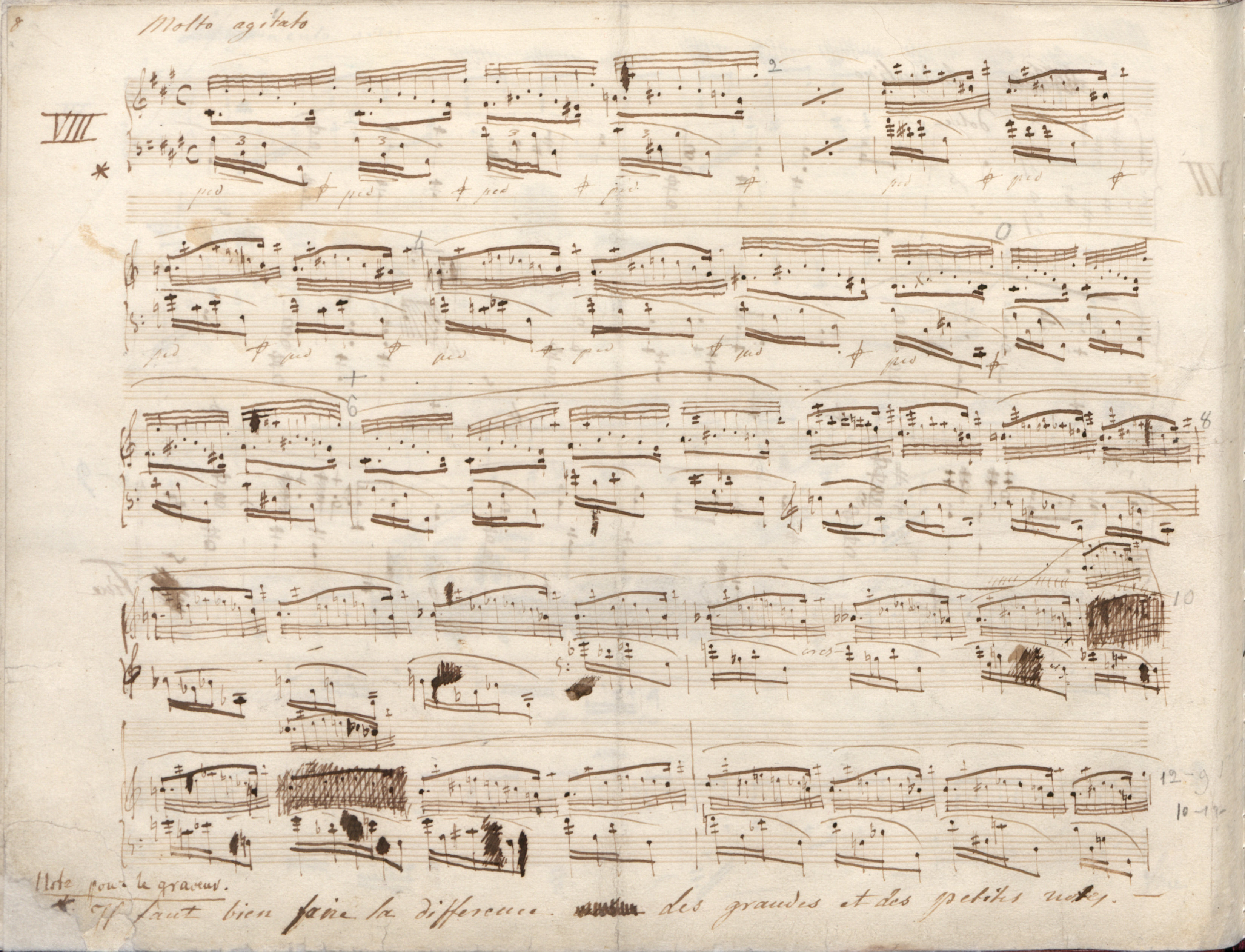



The missing dashes marking the range of crescendo is a frequent inaccuracy of Chopinesque first editions. In turn, it is more difficult to evaluate the extension of their range in FE (→EE). The reviser or engraver could have considered the markings in b. 12-13 (
 ) to be a natural ending of the crescendo and assumed that the missing dashes were a result of the composer's inadvertence. However, that reasoning is not as obvious as it seems at first glance – after the ascending progression in b. 9-10, based on the f pedal note, the following one and a half bar brings rather a momentary respite due to the descending sequence of half-bar cadences. Due to the above reason, in the main text we keep the version of A (→FC).
) to be a natural ending of the crescendo and assumed that the missing dashes were a result of the composer's inadvertence. However, that reasoning is not as obvious as it seems at first glance – after the ascending progression in b. 9-10, based on the f pedal note, the following one and a half bar brings rather a momentary respite due to the descending sequence of half-bar cadences. Due to the above reason, in the main text we keep the version of A (→FC).
Compare the passage in the sources »
category imprint: Differences between sources
issues: Inaccuracies in GE, FE revisions
notation: Verbal indications





